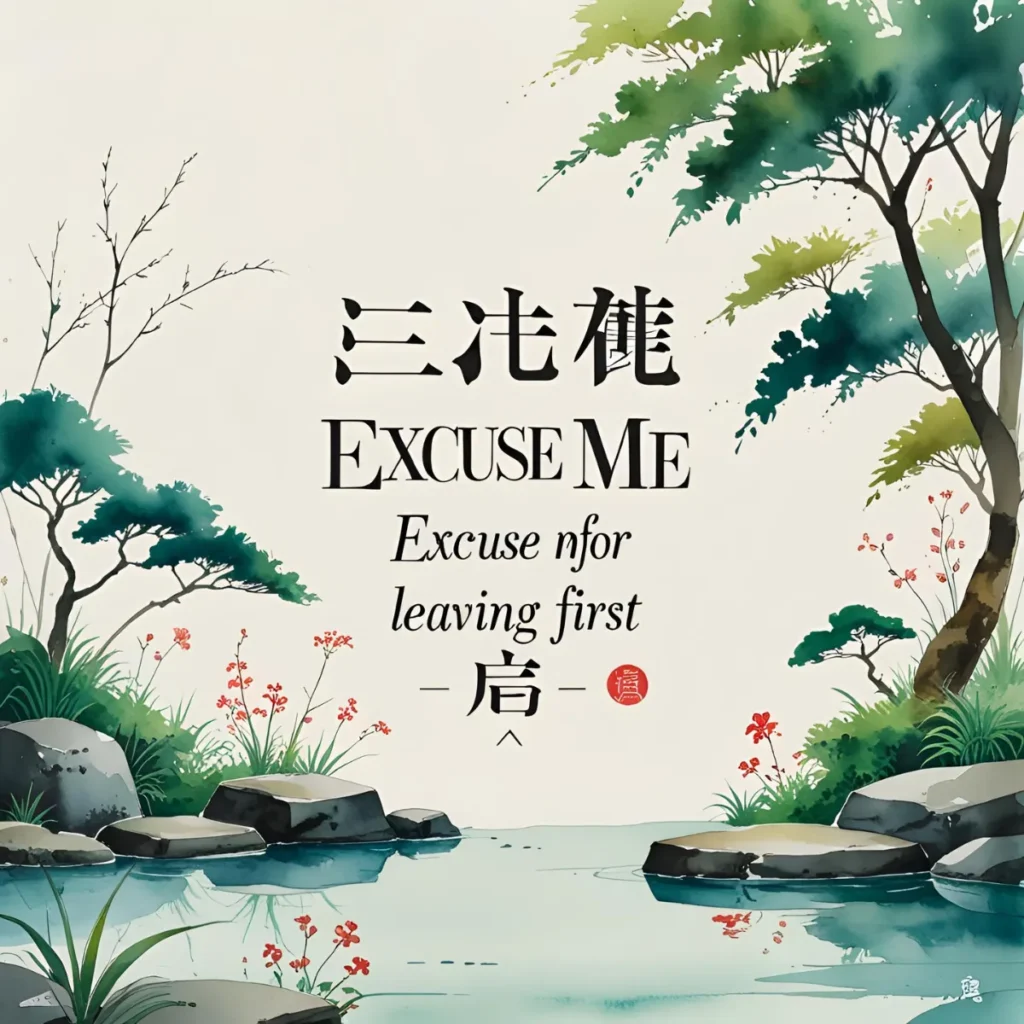Saying goodbye in Japanese isn’t just a formality—it reflects the deep respect and emotion woven into Japanese culture.
Whether you’re leaving a workplace, ending a phone call, or parting with a friend at the train station, using the right word or phrase makes all the difference.
Japanese offers a variety of ways to say goodbye, each suited to different relationships, moods, and situations. Want to sound more native and respectful when leaving?
Let’s explore 15 meaningful ways to say goodbye in Japanese, complete with real-world dialogues and cultural insights.
Goodbye in Japanese
さようなら (Sayōnara) – The standard “Goodbye,” used for longer-term partings.
じゃあね (Jā ne) – Casual “See you,” for friends and peers.
またね (Mata ne) – “See you again,” friendly and informal.
また明日 (Mata ashita) – “See you tomorrow.”
じゃあ、また (Jā, mata) – “Well, see you,” casual.
お疲れ様です (Otsukaresama desu) – “Thank you for your hard work,” used at workplaces when leaving.
お先に失礼します (Osaki ni shitsurei shimasu) – “Excuse me for leaving before you,” polite workplace goodbye.
では、また (Dewa, mata) – “Well then, until next time,” polite.
ごきげんよう (Gokigenyō) – Very formal “Farewell,” old-fashioned but elegant.
行ってきます (Ittekimasu) – “I’m off,” when leaving home (to those staying).
行ってらっしゃい (Itterasshai) – “Take care,” said to someone leaving.
じゃあ、また今度 (Jā, mata kondo) – “See you next time,” casual.
バイバイ (Baibai) – “Bye-bye,” informal and friendly.
また後で (Mata ato de) – “See you later.”
お気をつけて (Oki o tsukete) – “Take care,” when parting ways.
Ready to say goodbye like a native? Start practicing with these 15 powerful phrases!
1. さようなら (Sayōnara) – “Goodbye”
Origin:
A formal term that literally means “if it is to be so,” implying a long or permanent farewell.
Example:
👤 User A: じゃあ、またね。
👤 User B: さようなら。また会える日を楽しみにしています。
(User A: Well, see you later.
User B: Goodbye. I look forward to the day we meet again.)
Use: Formal or emotional goodbyes; often used when parting for a long time.
2. じゃあね (Jā ne) – “See ya”
Origin:
A casual phrase derived from “じゃあ” (well then) and “ね” (a softener).
Example:
👤 User A: そろそろ帰るね。
👤 User B: じゃあね!また明日!
(User A: I’m heading home.
User B: See ya! See you tomorrow!)
Use: Informal; between friends or peers.
3. またね (Mata ne) – “See you again”

Origin:
From “また” (again) and “ね” (particle for emphasis or friendliness).
Example:
👤 User A: 授業楽しかったね。
👤 User B: うん!またね!
(User A: Class was fun, huh?
User B: Yeah! See you again!)
Use: Casual; for short-term goodbyes.
4. また明日 (Mata ashita) – “See you tomorrow”
Origin:
Literally means “again tomorrow.”
Example:
👤 User A: 今日はありがとう!
👤 User B: こちらこそ!また明日!
(User A: Thanks for today!
User B: Likewise! See you tomorrow!)
Use: Friendly and casual; when you know you’ll meet again soon.
5. お先に失礼します (Osaki ni shitsurei shimasu) – “Excuse me for leaving first”

Origin:
Common in Japanese workplaces. Literally: “Excuse me for being rude by going ahead.”
Example:
👤 User A: お先に失礼します。
👤 User B: お疲れ様でした。
(User A: I’m leaving for the day.
User B: Thanks for your hard work.)
Use: Polite and professional; used in offices or formal environments.
6. お疲れ様でした (Otsukaresama deshita) – “Thank you for your hard work”
Origin:
A traditional Japanese expression to acknowledge effort; used when parting at work.
Example:
👤 User A: 今日も大変でしたね。
👤 User B: はい。お疲れ様でした!
(User A: Today was tough, huh?
User B: Yeah. Thanks for your hard work!)
Use: Respectful and formal; workplace setting.
7. バイバイ (Bai bai) – “Bye-bye”
Origin:
Borrowed from English; playful and commonly used among children or friends.
Example:
👤 User A: バイバイ、また遊ぼうね!
👤 User B: バイバイ〜!
(User A: Bye-bye! Let’s play again soon!
User B: Bye-bye!)
Use: Informal, friendly, often used by kids or close friends.
8. またね〜 (Mata ne~) with a soft tone
Origin:
Same as “またね,” but the drawn-out ending adds friendliness or cuteness.
Example:
👤 User A: もう行くね〜
👤 User B: またね〜♡
(User A: I’m going now~
User B: See you~♡)
Use: Cute, casual; common among young people or couples.
9. ではまた (Dewa mata) – “Well then, until next time”

Origin:
Polite structure; used more in written Japanese or among adults.
Example:
👤 User A: 本日はありがとうございました。
👤 User B: ではまた、近いうちに。
(User A: Thank you for today.
User B: Well then, until next time.)
Use: Polite and professional; often used in business or emails.
10. ごきげんよう (Gokigen yō) – “Farewell / May you be well”
Origin:
An elegant, old-fashioned phrase used historically by aristocrats and still heard in anime or formal speeches.
Example:
👤 User A: ごきげんよう、皆様。
👤 User B: ごきげんよう。
(User A: Farewell, everyone.
User B: Farewell.)
Use: Extremely formal or theatrical.
11. 失礼します (Shitsurei shimasu) – “Excuse me (I’m leaving)”
Origin:
Means “I’m being rude by leaving”; commonly used in phone calls or meetings.
Example:
👤 User A: 会議を抜けてもよろしいですか?
👤 User B: はい、失礼します。
(User A: May I leave the meeting?
User B: Yes, excuse me.)
Use: Polite; for meetings or formal exits.
12. じゃあ、また後で (Jā, mata atode) – “See you later”
Origin:
“Jā” = “well then”; “mata atode” = “again later.”
Example:
👤 User A: トイレ行ってくる。
👤 User B: じゃあ、また後で!
(User A: I’m going to the bathroom.
User B: Okay, see you later!)
Use: Friendly and flexible for informal settings.
13. じゃねー (Jā nē) – Slang for “Bye”
Origin:
Variation of “じゃあね,” used more casually and often by young people.
Example:
👤 User A: あとでラインして〜
👤 User B: じゃねー!
(User A: Message me later~
User B: Byeee!)
Use: Informal, slangy; youth or pop culture.
14. 気をつけてね (Ki o tsukete ne) – “Take care”
Origin:
Literally means “Be careful”; a warm goodbye when someone is going somewhere.
Example:
👤 User A: 帰るね。
👤 User B: 気をつけてね!
(User A: I’m heading home.
User B: Take care!)
Use: Caring, thoughtful; for friends or family.
15. またお会いしましょう (Mata o-ai shimashō) – “Let’s meet again”
Origin:
A formal phrase used in speeches or public speaking.
Example:
👤 User A: 今日は本当にありがとうございました。
👤 User B: またお会いしましょう。
(User A: Thank you very much for today.
User B: Let’s meet again.)
Use: Very formal; perfect for ceremonies, events, or business farewells.
FAQs
1. How do you say goodbye in Japanese?
The most common word for goodbye is “さようなら” (sayōnara).
2. Is “sayōnara” used in everyday situations?
Not always. Sayōnara sounds a bit final, like you won’t see the person for a while.
3. What’s a more natural daily goodbye?
Most people use “じゃあね” (jaa ne) meaning “See you” or “Bye.”
4. How do you say “See you later” in Japanese?
You can say “またね” (mata ne) which means “See you again.”
5. Is there a polite way to say goodbye?
Yes! You can say “失礼します” (shitsurei shimasu) when leaving a workplace or meeting.
6. What do Japanese people say when leaving home?
They say “いってきます” (ittekimasu), meaning “I’m going now.”
7. What do people reply to いってきます?
They say “いってらっしゃい” (itterasshai) meaning “Come back safely.”
8. How do I say goodbye at night?
You can say “おやすみなさい” (oyasuminasai) which means “Good night.”
9. Is goodbye different in formal vs informal situations?
Yes. Formal: sayōnara, shitsurei shimasu.
Informal: jaa ne, mata ne.
10. Do Japanese people bow when saying goodbye?
Often yes, especially in polite or professional settings.
Conclusion:
Whether you’re texting a friend or bowing out of a business meeting, saying goodbye in Japanese isn’t just about words—it’s about showing awareness, warmth, and respect. Mastering the right expression for each setting will not only improve your language skills but also deepen your cultural understanding.



